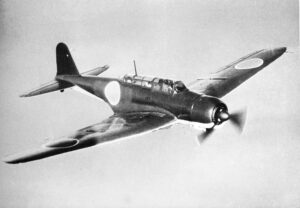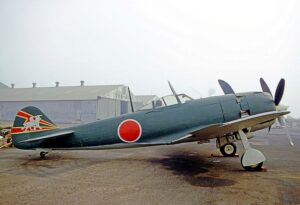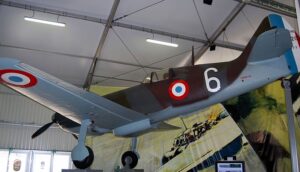Time Period: World War II
Country of Origin: Japan
Type: Fighter Aircraft
Manufacturer: Nakajima Aircraft Company
Nakajima J1N Aircraft Overview
The Nakajima J1N, also known as the “Gekko” or “Irving” by the Allies, was a twin-engine aircraft developed by Nakajima Aircraft Company for the Imperial Japanese Navy during World War II. It was designed as a long-range reconnaissance and night fighter aircraft, and was one of the fastest aircraft of its type in the war.
The J1N had a streamlined design with a twin-engine configuration, retractable landing gear, and a distinctive “double bubble” canopy for improved visibility. It was armed with a combination of 20mm and 30mm cannon, and could carry up to 800 kg (1,764 lbs) of bombs or torpedoes.
The J1N was used primarily in the Pacific theater, and saw action in various campaigns including the Battle of Guadalcanal and the Battle of the Philippine Sea. It was particularly effective as a night fighter, where its speed and firepower made it a formidable opponent for Allied bombers.
Later versions of the J1N were equipped with radar and other advanced avionics, further improving its effectiveness as a night fighter. However, the J1N suffered from several design flaws, including a lack of armor protection and a tendency to catch fire in combat.
Despite these issues, the J1N was a valuable asset to the Imperial Japanese Navy and played a critical role in its reconnaissance and night fighter operations. Today, no J1Ns survive, although some wreckage has been recovered and restored by aviation enthusiasts.
Nakajima J1N1-S Specifications
- Crew: 2
- Length: 12.77 m (41 ft 11 in)
- Wingspan: 16.98 m (55 ft 9 in)
- Height: 4.562 m (15 ft 0 in)
- Wing area: 40 m2 (430 sq ft)
- Empty weight: 4,480 kg (9,877 lb)
- Gross weight: 7,010 kg (15,454 lb)
- Max takeoff weight: 8,184 kg (18,043 lb)
- Fuel capacity: 1,700 L (373.9 imp gal)
- Powerplant: 2 × Nakajima NK1F Sakae 21 14-cyl. two-row air-cooled radial piston engine, 840 kW (1,130 hp) each take-off rating. 820.3 kW (1,100 hp) at 2,850 m (9,350 ft). 730.8 kW (980 hp) at 6,000 m (19,685 ft)
- Propellers: 3-bladed un-handed metal constant-speed propellers
Nakajima J1N1-S Performance
- Maximum speed: 507 km/h (315 mph, 274 kn) at 5,840 m (19,160 ft)
- Cruise speed: 330 km/h (210 mph, 180 kn) at 4,000 m (13,123 ft)
- Range: 2,545 km (1,581 mi, 1,374 nmi)
- Ferry range: 3,780 km (2,350 mi, 2,040 nmi)
- Rate of climb: 8.7 m/s (1,710 ft/min)
- Time to altitude: 5,000 m (16,404 ft) in 9 minutes 35 seconds
- Wing loading: 175.3 kg/m2 (35.9 lb/sq ft)
- Power/mass: 0.27 kW/kg (0.125 hp/lb)
Nakajima J1N1-S Armament
- Guns: 4× 20 mm Type 99 cannon, two upward- and two downward-firing
-
-
- or 2× 20 mm Type 99 cannon, firing upward only
- or 3× 20 mm Type 99 cannon, all three firing upward
-
Nakajima J1N Image Gallery
More Nakajima Aircraft

Nakajima B5N
The Nakajima B5N was a Japanese carrier-based torpedo bomber used during the Second World War by the Imperial Japanese Navy (IJN).

Nakajima Ki-43 Hayabusa
The Nakajima Ki-43 Hayabusa was a single-engine fighter aircraft used by the Imperial Japanese Army Air Service in World War II.

Nakajima Ki-84 “Hayate”
The Nakajima Ki-84 was a Japanese single-seat fighter aircraft used by the Imperial Japanese Army Air Service during World War II.

Nakajima A6M2-N
The Nakajima A6M2-N was a single-crew floatplane aircraft created in 1941 and based on the Mitsubishi A6M Zero Model 11.










